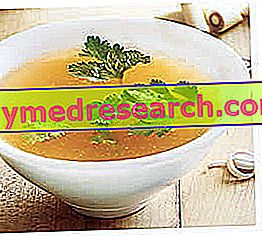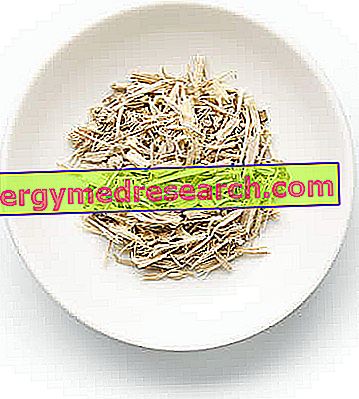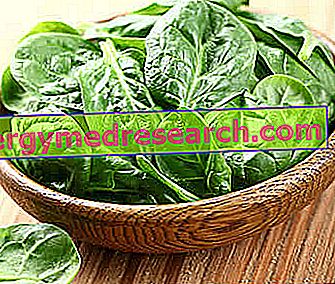Generality
The broth is a food product based on water and various types of molecules released, during cooking, from the ingredients used for its formulation (vegetable and / or animal).
The broth can be based on: vegetables, meat, fish or mixed meat / fish (little used and subject to controversy);

WARNING! The fish broth is NOT the fish comic!
The essential concept for preparing broth is to pass as many nutrients as possible from the ingredients to the cooking water. The tools are few: knife and cutting board for trimming the ingredients, a muffler (or a casserole) and a stove for cooking, a skimmer for eliminating the foam during cooking and a Chinese colander (possibly supported by a cloth sieve) for filtering. Also the ingredients of the broth are few: water, celery, carrots, onion and the object of the broth (meat, fish, other vegetables and spices or aromatic herbs).
Quality broth
A good broth is obtained respecting some small tricks:
- Do not use the stock cube, powder, granule or any other surrogate
- ALWAYS use cold water: the ingredients, whatever they are, must be immersed in cold, NOT boiling water; this is because cooking in cold water facilitates the molecular transit from tissues to water, while immersing them immediately in boiling water their surface would be "healed" hindering the release of nutrients.
- Salt at the end of cooking: it is more like a personal opinion. It is true that chlorine and sodium contained in cooking salt should, theoretically, facilitate the extraction of organic liquids and molecules present in the ingredients; on the other hand, the same result can be achieved by making the size smaller. We remind you that adding the salt during cooking increases the probability of a possible excess (which would cause irreparable damage to the preparation / s).
- No hurry: cooking times are long and the fire must NEVER determine the BUBBLE of the broth; by eye, the appropriate temperature is that which causes the sweet simmering. We recommend using a lid to prevent the stock from shrinking excessively.
- Choice of products: some foods are not suitable for broth preparation; personally I strongly advise against game meat broth (even pork is not the best) and blue fish for fish broth. Sheep broth is a decidedly special base that not everyone can like.
- Respect of purpose: the broth is a fundamental ingredient for many recipes, therefore, the taste and aroma must be calibrated on the basis of the specific use. In the event that the combination is NOT well known, it is advisable to structure a light, spice-free and basically tasteless broth.
- Processing of the ingredients: the broth is born as a system of use of the portions NOT edible (or no longer edible) of the food. In the broth they ended: scraps of meat, fish, bones, bones, damaged vegetables, unused vegetable trimmings, etc .; the goal was to extrapolate the taste of foods that, otherwise, would have ended up being fed to pigs, chickens, dogs or cats. Today, instead, the broth has the function of structuring and giving "thickness" to the taste of the recipes that foresee its use; it goes without saying that it must in no way present defects or inadequate scents. All ingredients must be subjected to ordinary washing and cleaning in accordance with certain details. For example, the celery goes private (as well as the roots) also of the upper leaves which, like the surface of the carrots (also to be eliminated) or the stem of the parsley, gives a bitter aftertaste to the finished broth.
- Foam carefully during cooking: during the heat treatment, the broth (especially meat or fish) tends to form a dirty white foam. This should be suitably eliminated by means of a slotted spoon to prevent the broth from becoming cloudy.
- Do not mix it BUT filter it: the broth should not be mixed during cooking but must be filtered to prevent it from becoming cloudy. In this last step, the bottom of the stock should not be used.
- Pigment it according to the destination: the vegetable broth is straw yellow in color, the meat broth is more golden and the fish broth varies according to the ingredients (usually whitish, darker in the presence of shellfish). However, sometimes, it may be necessary to increase or enhance the color of the liquid to enrich the final presentation. The techniques are NOT all acceptable and some may slightly alter the taste of the broth; however, for information, below I will list the most used ones: tomato paste or red turnip to get a more orange color, zucchini peel or leafy green vegetables to get a more greenish color, half onion BURNED on a pan or a spoon of caramel to obtain a more golden color.
- Greater digestibility: the broth, in itself, is a food that slows down digestion; therefore, when composing a meat broth, it is essential that this is degreased COLD (refrigerator temperature, so that the lipids solidify) to avoid further compromising digestion times. It can also be useful to filter it, as well as with a sieve, also using a cotton cloth to reduce the suspended protein residues.
Mixed Meat Broth - All Tricks to Make It at Home
X Problems with video playback? Reload from YouTube Go to Video Page Go to Video Recipes Section Watch the video on youtubeWhy does broth slow down digestion?
The broth is, for many, a non-digestible food. This is NOT due to the fullness of its nutritional intake (as long as it is degreased), but rather to the dilution of gastric juices, which have their effect more slowly. Following the ingestion of the broth, the secretion increases to compensate for the tamponage of the ingested liquid, without taking into account the fact that the absorption of water by the mucosa is already underway. Once absorbed a large part of the liquid, the pH of the gastric contents is logically very low, consequently, it requires a rather important secretion of buffer molecules by the mucous membrane of the intestine; this process further slows down the passage in the digestive tract.
Some examples of broth
- Vegetable neutral broth: celery, carrots, white or yellow onion and water
- Rich vegetable broth: celery, carrots, white or yellow onion, zucchini, parsley leaves, potato, tomato and water
- Neutral meat broth: celery, carrots, white or yellow onion, beef muscle or brisket, hen or capon or guinea fowl (QB), ossobuco and water
- Flavored meat broth: celery, carrots, white or yellow onion, beef muscle or brisket, hen or capon or guinea fowl (QB) ossobuco, pepper in grains, juniper berries, bay leaves, cloves (questionable) and water
- Fish broth: celery, carrots, white or yellow onion, heads and bones / carapace of galinelle, small stockfishes, paganelli, small scorpion fishes etc., crustacean shells such as prawns, scampi, crabs, etc. and water. For this preparation it is possible to add some spices or aromatic herbs at will, preferably at the end of cooking.



